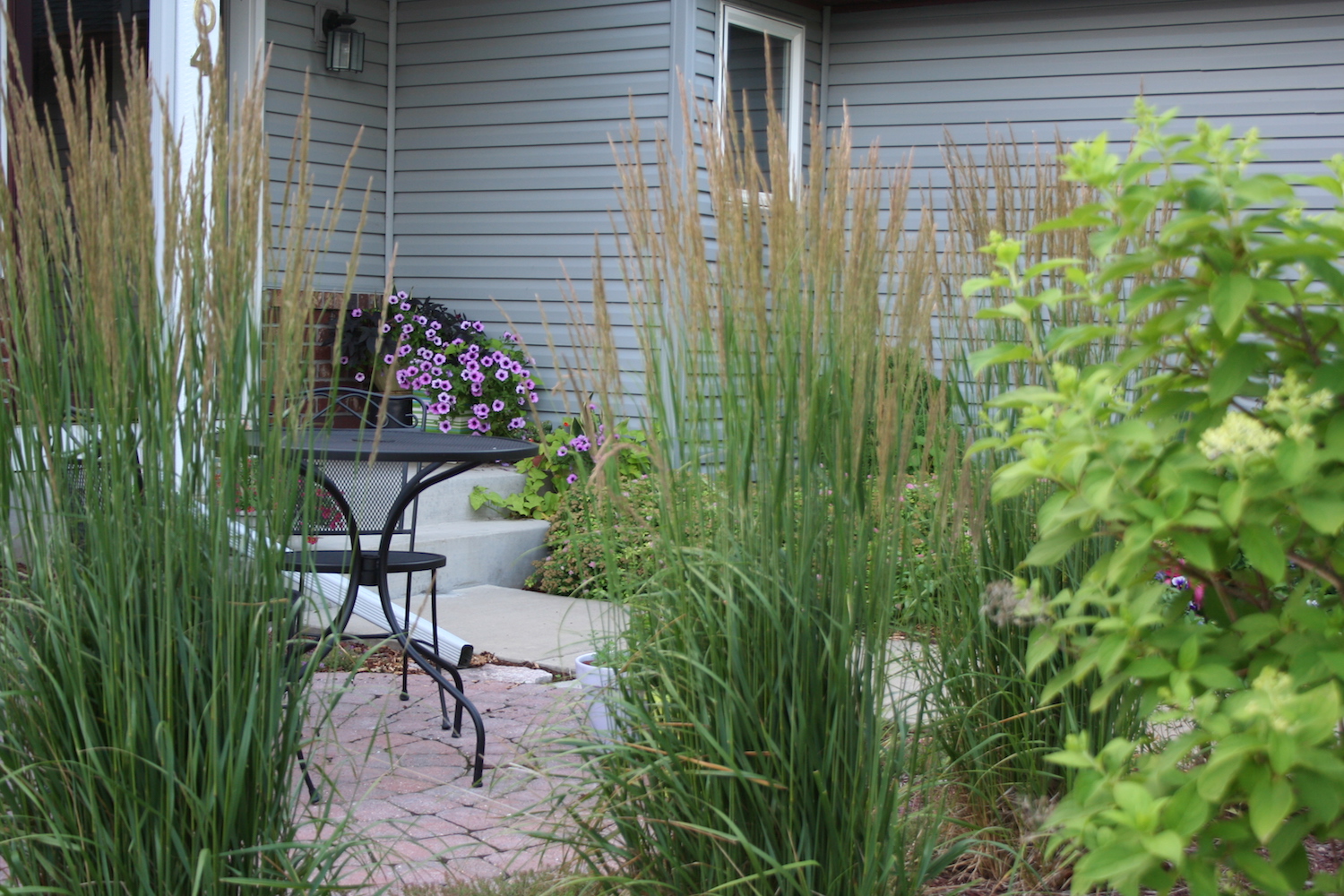We recently ripped out the foundation plantings around the front of our house and replaced them with a tiered area with a 8-foot circular brick patio surrounded by shrubs, grasses, and small trees. This is an idea that had been percolating in my head for a couple of years as a result of a sense that the best place to sit outdoors at our house, especially in the early evening, was not the place in the back. The evolution of this project points to a number of issues related to home siting and what makes people comfortable.
Several years ago, I stumbled upon a book on architecture called A Pattern Language. The authors note that people feel extremely comfortable in older towns — specifically those built in the Middle Ages. These old towns followed similar design principles, including the relationship between people and the street and ways to orient a home. They condensed these ideas to 257 rules, many of which speak to some very basic elements of human nature. Why do people like nooks and window seats, for example? Rule Nos. 179 and 180: Alcoves and window seats. Why do we feel more vibrant in rooms with windows on more than one wall? Rule No. 159: Light on two sides. Why have basement bedrooms for teenagers become so popular? Rule No. 154: A teenager’s cottage.
If you are considering building a house, read this book first. You probably won’t want to follow all the rules — the authors are against most bedrooms — but it will alert you to some typical problems with newer home design.
Several of the rules relate to the connection between the house, the garden and the street. People enjoy front porches because they provide a way to see the street, to interact with your neighbors, while still remaining close to your home and protected. (Rule No. 140). Adding a porch was out of the question for us: it would have destroyed the lines of our home and cost too much. But the patio was an easier fix and would give us many of the benefits of a front porch.
While I had the vision of what we wanted, I wanted to make sure it would look right with our home and that it would drain properly. (As someone who spent many hours shop-vac-ing the basement of a previous home — trust me on this one, water trumps aesthetics every time.) To make sure the plan would work, I called in Kristen from Knecht’s who had helped me a year or so ago in designing my other front-yard garden. She came up with the idea of repeating the boulders we have on the hilly sides of our house around the front to create a tier. We agreed that an 8-foot patio was plenty of room for a small table and a couple of chairs. Around that, we planted some of my favorite plants: sedum, baptisia (this came out of another garden in our yard), weigela, coreopsis and a hydrangea tree. For a little seculsion, Kristin recommended Karl Foerster grass, which I know is a beautiful and reliable plant that grows about 4 feet tall, just enough to provide a sense of seclusion. Some groundcovers such sweet woodruff and creeping thyme will give texture to the space around the patio, and a nice smaller evergreen — Tannenbaum mugo pine — anchors one edge of the tier. Stepping stones connect the upper and lower tiers and seem to beckon people to come up for a chat.
Knecht’s did the installation for us — moving boulders is beyond my skill level — and finished the job in just a few days. I’m very happy with the look and a couple of my neighbors have commented that they like it, too. For now, the patio is empty, though I’m thinking we might be able to put a Christmas tree out there when the season arrives, and next summer we’ll create a comfortable place to sit out there.
I’m hoping it won’t feel too exposed, but I followed as many of the pattern language rules as possible including having a wall to the back of the sitting area, terracing the levels, and creating a half-high wall (with plants rather than bricks) to offer a sense of seclusion.


Mary – I love A Pattern Language! And I love that you’re mentioning it here in relation to planning a garden. Rule 159 has always been the most memorable to me, because in the book they point out that without 2 angles of light on people’s faces, we can’t read one another’s facial expressions and feel uncomfortable.
I have a newly developed passion for gardening for birds (so that I can photograph them) and know that they require a different sort of pattern language – quick getaways, running water, etc… I don’t suppose you know of another book that gets that in depth for wildlife?
JP — You are SO right about rule 159 — it is the reason older homes often feel comfortable and newer ones sometimes do not. There are quite a few good books on gardening for birds. I like Best Ever Backyard Birding Tips, a relatively new title from Rodale. Deborah Martin is the author. It includes diagrams and plant suggestions. Thanks for stopping by!
Very interesting to think about why we feel more comfortable in some settings than others. I’ll have to look for the book. And congratulations on your new patio!
Oh, this sounds very interesting! Thanks for sharing your process and the book title. I am going to look for it at the library. You have piqued my curiosity!
Vicky
I love finding where design meets psychology, especially in the garden. Can’t wait to read the book.